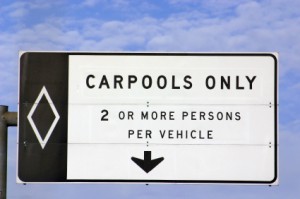
On this page, we discuss the following ways we can do our part to reduce emissions from car travel:
- Car share
- Plan your trips
- Carpool
- Moderate, steady speeds
- Don’t idle
- Don’t top up
- Inflate your tires
- Maintain your vehicle
![]() Click a link in the list above to jump to that topic on this page.
Click a link in the list above to jump to that topic on this page.
Individuals commuting by car is the largest single source of greenhouse gas emissions in Manitoba. Almost one-third of transport emissions come from cars, trucks and motorbikes. (1)
Car share
Become a member of a car share cooperative. Use and pay for a vehicle only when you need it. Peg City Car Co-op will change the way you think about getting around Winnipeg! All the convenience without the cost. Reserve on-line.
Plan your trips
Do you need to drive to the other end of town to get that snack right now? Is there some place closer? Could it wait until you shop for next week’s groceries?
Organize your needs and plan your trips so that you can cover more of your requirements in one trip.
Carpool
Carpool.ca is a website where you can register and connect to other local people who are interested in carpooling.
Travel at moderate, steady speeds
Posted speed limits are not just for safety. They also represent optimal rates of travel that maximize vehicle efficiency.
Increasing your speed on the highway by 10 KPH increases your fuel consumption by about 7 percent.
Don’t idle
Check out our website section on Idling and avoid drive-through windows!
Don’t top up
Forget putting precisely $40.00 of fuel in your tank. Topping up releases emissions directly to the atmosphere from your tank and the nozzle.
Also make sure the gas cap fits properly.
Inflate your tires
Properly inflated tires are safer and they can save you money.
Many people travel on under-inflated tires and don’t realize it. Modern radial and especially low-profile tires look perfectly fine even when they are significantly under or over-inflated.
The BeTireSmart.ca website has some great information on the importance of properly inflated tires. you’ll find a good discussion and chart on how just slightly under-inflated tires can increase fuel consumption by 2-4% and how one tire 50% under inflated (which visually is still difficult to detect) can result in a significant increase in fuel consumption. That’s not to mention the premature wear of the tire – and tires are expensive!
If we add up the cumulative effect nationally of all vehicles with at least one under-inflated tire the easily avoidable GHG emissions would be significant.
Maintain your vehicle
A poorly maintained vehicle burns more fuel (and therefore releases more emissions) per km than a well-tuned one. Monitor your fuel economy. A sudden change may mean something’s wrong.
Here are the key things to maintain:
- Change air filter regularly
- Change oil & oil filter regularly




